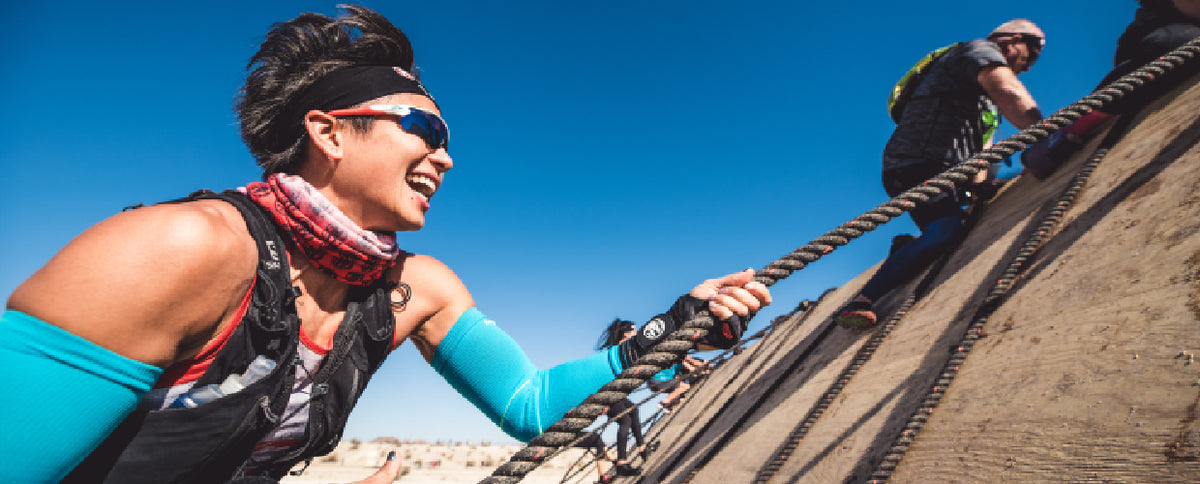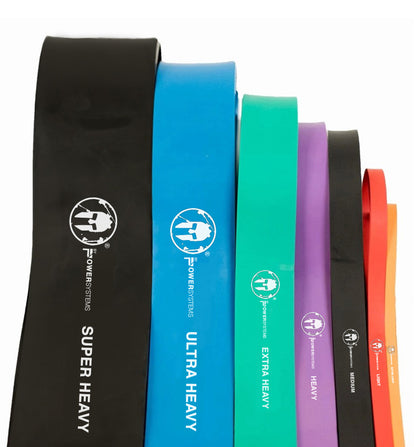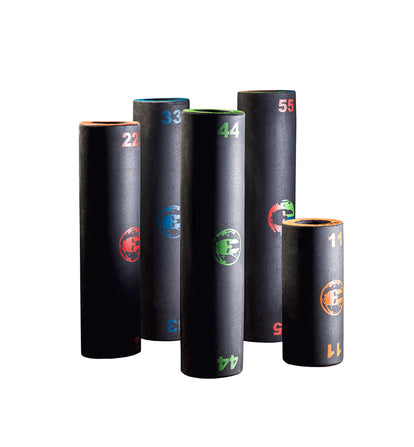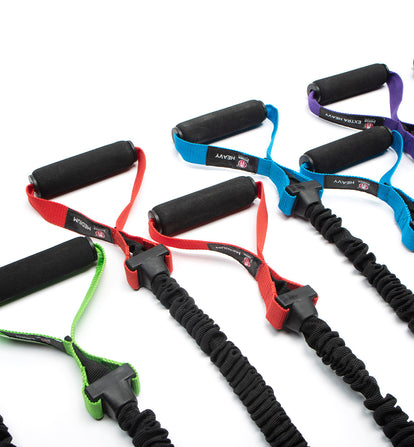The 'True Strength Training' Workout to Unleash Your Spartan Grit

Do these excuses sound familiar?
- “Lifting weights will make me big and bulky."
- "I get bored doing the same workout every week."
- "Metabolic Conditioning more closely simulates a Spartan Race course."
- "There’s not enough time in the day to strength train AND run.”
It's easy to make these excuses time and time again. As Spartans, we have a love-hate relationship with lifting weights. Our sport thrives off of our ability to interchange strength with cardio and agility effortlessly. Why would we ever need to spend time perfecting just one aspect of training when we can optimize our time by incorporating the whole gamut into one single training session, just like we would do in a race?
The answer is simple. By focusing on each individual component needed to race—from stamina to cardio to explosive power, and everything in between—you’ll maximize your racing ability as a whole.
What is True Strength?
True strength is the most underutilized fitness spect of Spartan racing. The more weight you can lift with <insert muscle here>, the more beneficial that muscle will be when your body is in a fatigue-state similar to that of a race. True strength training increases your strength threshold allowing your muscles to lift more weight for longer at any given time. This translates into your ability to run, to carry, and to overcome whatever obstacle that is thrown your way.
Related: Lift Big Weights, Get Bigger Results
Anaerobic Strength
Listen, I get it. I’m a Spartan and I’m a Spartan SGX coach. Metabolic conditioning makes so much more sense from the outside looking in. We maximize our time in the gym by incorporating our heart rate training with strength training. The truth of the matter is, though, if we are mixing different types of workouts into one session, we are strictly training our body aerobically. Essentially, we are wasting the energy necessary to truly test our muscles for strength. We must increase our anaerobic strength in order to preserve our oxygen and our aerobic pathways whenever we are out on the course. This means that we must put an emphasis on true strengthening in the offseason so we can then focus our training towards more aerobic, power, and skill work as we get into the months leading up to our racing.
Our body utilizes multiple energy pathways when it comes to muscular recruitment. The larger the muscle group, and the more muscle groups involved, the more energy is required. These bigger movers often require little to no oxygen to initiate the lift and because of the maximum output needed, it can only engage the muscles for a short duration of time. During these exercises, we can lift heavier weight, but for less time. These types of exercises are more anaerobic in nature. This is where our maximum strength comes from.
As we increase the amount of repetitions we perform in a set, we require more and more oxygen. This shifts our energy system utilization into more aerobic pathways, and with this trade, we also can no longer lift as heavy of weight. We can lift more weight over a longer period of time, but we are not teaching our body how to increase its maximum potential.
Related: The 15-Minute Plyo Box Bodyweight Workout to Up-Level Your Lifting Game
When lifting for true strength, our workouts are going to look very similar to traditional strength training. We'll perform one exercise in its entirety before moving onto the next. This is typically where Spartans start to get bored, but please stay with me. By performing all sets of one exercise before moving on, we are maximizing our energy development. The exercises that require the most energy will be performed first and then any accessory or smaller muscle energy exercises will be performed after. We'll finish the workout with core stability training to ensure that we keep our core active and engaged throughout the entirety of the exercise.
The Workout: Take True Strength Training to the Max
How it Works:
In today’s workout, we'll be going through a true strength build. Our compound lifts will be done in a linear pyramid scheme to build strength through each set. We'll be lifting a new weight with every set, but changing our number of repetitions to coincide with each weight. After our compound movements, we'll move into our accessory exercises which will consist of less sets, but with more repetitions. This will target a strength-hypertrophy goal to increase the number of muscle fibers which, over time, translate into more support for our major movers. The main purpose of accessory work is to directly support the compound movements on and off the course.
Why Rest Intervals Are Key
Pay close attention to the rest intervals during today’s workout. Timers are a great way to ensure that you are getting adequate rest to maximize your muscle development. The higher the weight you lift in a given set, the more rest is needed to replenish your anaerobic muscle energy. As the sets and reps change to favor accessory work, your rest intervals will decrease.
Enjoy this offseason build, Spartans. During this phase of training, you'll increase your overall capacity to lift. This is where you are building the strength base that will power you through your next season.
Related: Power Workout: Lift Longer and Get Stronger
The Circuit
1. Chest
Familiarize yourself with the full sequence here, then scroll for a breakdown of each exercise to nail form, precision, and reps.
Incline Bench Press
Set 1: 3 Reps @ 85% or 8.5/10 Perceived Effort
Set 2: 2 Reps @ 90% or 9/ 10 Perceived Effort
Set 3: 1 Rep @ 95% or 9.5/ 10 Perceived Effort
Set 4: 2 Reps @ 90% or 9/10 Perceived Effort
Set 5: 3 Reps @ 85% or 8.5/10 Perceived Effort
Rest: 3 Minutes between each set
Floor Pec Fly
4 sets of 5 Reps @ 80% or 8/10 Perceived Effort
Rest: 2 Minutes between each set
Cable/Band Press
3 sets of 8 Reps @ 75% or 7.5/10 Perceived Effort
Rest: 60-90 Seconds
SPARTAN by Power Systems Strength Band
Power Systems
Push Ups
3 sets of 8 Reps @ 75% or 7.5/10 Perceived Effort
Rest: 60-90 Seconds
Bench Dip
3 sets of 8 Reps @ 75% or 7.5/10 Perceived Effort
Rest: 60-90 Seconds
Roll Outs
3 sets of 8 Reps @ 75% or 7.5/10 Perceived Effort
Rest: 60-90 Seconds
2. Back
Familiarize yourself with the full sequence here, then scroll for a breakdown of each exercise to nail form, precision, and reps.
Deadlifts
Set 1: 3 Reps @ 85% or 8.5/10 Perceived Effort
Set 2: 2 Reps @ 90% or 9/ 10 Perceived Effort
Set 3: 1 Rep @ 95% or 9.5/ 10 Perceived Effort
Set 4: 2 Reps @ 90% or 9/10 Perceived Effort
Set 5: 3 Reps @ 85% or 8.5/10 Perceived Effort
Rest: 3 Minutes between each set
Pull Ups
*Note: This can be done with a weight vest for a progression, or with a negative pull up/ resistance band for a regression
4 sets of 5 Reps @ 80% or 8/10 Perceived Effort
Rest: 2 Minutes between each set
Lat Pull Down
3 sets of 8 Reps @ 75% or 7.5/10 Perceived Effort
Rest: 60-90 Seconds
Bent Over Row
3 sets of 8 Reps @ 75% or 7.5/10 Perceived Effort
Rest: 60-90 Seconds
Face Pulls
3 sets of 8 Reps @ 75% or 7.5/10 Perceived Effort
Rest: 60-90 Seconds
Bicep Hold Hanging Leg Raise
*Note: Bicep Hold gives an added Isometric Contraction, can be done in a dead hang as a regression
3 sets of 8 Reps @ 75% or 7.5/10 Perceived Effort
Rest: 60-90 Seconds
3. Legs
Familiarize yourself with the full sequence here, then scroll for a breakdown of each exercise to nail form, precision, and reps.
Back Squats
Set 1: 3 Reps @ 85% or 8.5/10 Perceived Effort
Set 2: 2 Reps @ 90% or 9/ 10 Perceived Effort
Set 3: 1 Rep @ 95% or 9.5/ 10 Perceived Effort
Set 4: 2 Reps @ 90% or 9/10 Perceived Effort
Set 5: 3 Reps @ 85% or 8.5/10 Perceived Effort
Rest: 3 Minutes between each set
Bulgarian Split Squat
4 sets of 5 Reps @ 80% or 8/10 Perceived Effort
Rest: 2 Minutes between each set
Step Ups
4 sets of 5 Reps @ 80% or 8/10 Perceived Effort
Rest: 2 Minutes between each set
Side Lunge
3 sets of 8 Reps @ 75% or 7.5/10 Perceived Effort
Rest: 60-90 Seconds
Pistol Squats
3 sets of 8 Reps @ 75% or 7.5/10 Perceived Effort
Rest: 60-90 Seconds
Nordic Hamstring Curls
3 sets of 8 Reps @ 75% or 7.5/10 Perceived Effort
Rest: 60-90 Seconds
4. Shoulders*
Familiarize yourself with the full sequence here, then scroll for a breakdown of each exercise to nail form, precision, and reps.
*Important Note: Pressing overhead is not advised for anyone with shoulder mobility imbalances
Military Press
Set 1: 3 Reps @ 85% or 8.5/10 Perceived Effort
Set 2: 2 Reps @ 90% or 9/ 10 Perceived Effort
Set 3: 1 Rep @ 95% or 9.5/ 10 Perceived Effort
Set 4: 2 Reps @ 90% or 9/10 Perceived Effort
Set 5: 3 Reps @ 85% or 8.5/10 Perceived Effort
Rest: 3 Minutes between each set
Arnold Press
4 sets of 5 Reps @ 80% or 8/10 Perceived Effort
Rest: 2 Minutes between each set
Single Arm Lateral Side Raise
3 sets of 8 Reps @ 75% or 7.5/10 Perceived Effort
Rest: 60-90 Seconds
Front Raise
3 sets of 8 Reps @ 75% or 7.5/10 Perceived Effort
Rest: 60-90 Seconds
Bent Over Reverse Fly
3 sets of 8 Reps @ 75% or 7.5/10 Perceived Effort
Rest: 60-90 Seconds
Cable Lifts
3 sets of 8 Reps @ 75% or 7.5/10 Perceived Effort
Rest: 60-90 Seconds







